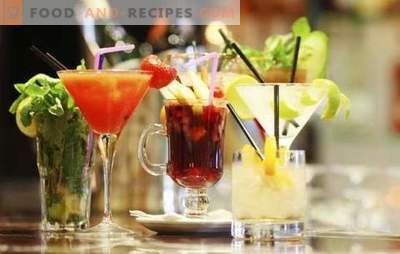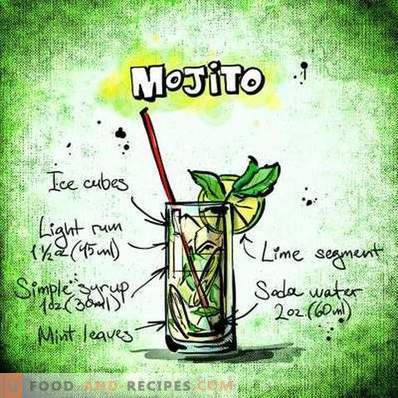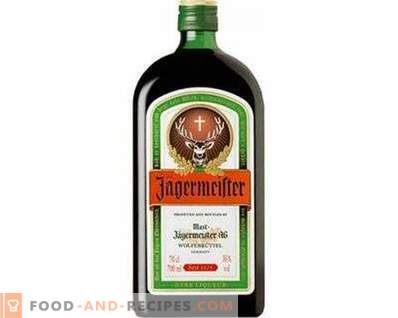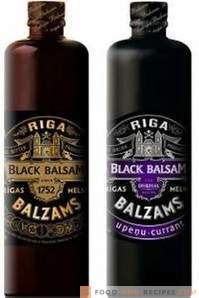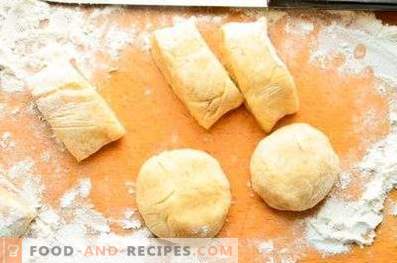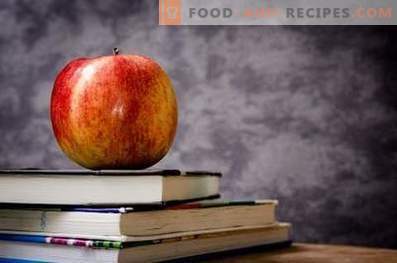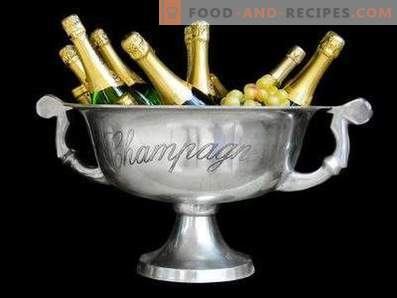
Rarely can a celebration be without sparkling wines. However, not everyone knows how to drink champagne correctly. In the company of close friends, no one will pay attention to violations of etiquette, but at the official banquet or reception, even a minor slip will create for you the image of a not too enlightened person. Champagne is considered a noble drink, and the culture of its use has many subtleties.
Classification of sparkling wines
Strictly speaking, only wine produced in the French province of Champagne has the right to be called champagne, but many of our compatriots are accustomed to call all sparkling wines that way. Today it is not considered a big mistake.
According to the generally accepted classification, sparkling wines are divided into several categories depending on their sugar content:
- Doux - sugar content is 50 g / l;
- Demi-sec (Rich) - contains from 33 to 50 grams of sugar per liter of wine;
- Sec (Dry) - contains from 17 to 35 grams of sugar per liter, the most popular semi-sweet and semi-dry sparkling wines belong to this category;
- Extra sec (Extra-dry) - contains from 12 to 20 g of sugar per liter, is not very popular, belongs to the category of dry and semi-dry wines;
- Brut (brut) - the sugar content in this type of champagne is strictly regulated, is 15 g / l;
- Non-dosage (brut nature) - dry sparkling wine, the sugar content of which does not exceed 6 g / l.
A bouquet of sparkling wine depends heavily on the grape variety from which it is made, but this characteristic has almost no effect on the rules of drinking, unless it is a white and pink champagne.
Usage Features
The general culture of the use of sparkling wines does not depend on their variety, but has many subtleties.
- Champagne can be served as an aperitif, accompaniment drink or digestif.
- Champagne is cooled to 7-8 degrees before serving, and it is this temperature that is optimal for a thin bouquet of this noble drink to open. In order for the wine to acquire the desired temperature, it is enough to hold it in the refrigerator for 2, 5-3 hours.
- To prevent the champagne from heating, it is often served in a bucket filled with ice water and chunks of ice. If you fill this bucket with ice alone, it will be a mistake.
- If the banquet table is large enough to hold a bucket of champagne, it can be put on it, but more often the bucket is placed on a separate table next to a bouquet of flowers.
- Some of our compatriots still believe that champagne should be opened effectively, with cotton, and poured it so that there is as much foam as possible. This point of view is directly opposite to the rules prescribed by etiquette. Champagne should be opened so that the cork does not fly out of it, so that champagne does not spill out of the bottle. Even cotton when opening a bottle of champagne indicates that it is done ineptly. To open the champagne correctly, you need to remove the protective grid and foil, tilt the bottle at an angle of 45 degrees and start to rotate, holding the cork with your other hand so that it does not fly out. At this time, it is not forbidden to take a tissue napkin in your hand to prevent slipping. Opening the bottle, the wine is poured into glasses in such a way that a thin stream runs down the wall and the drink foams as little as possible. Glasses filled in two stages. First, pour as much foam as it allows, then pour it so that the glass is three-quarters full.
- According to etiquette a man should open a bottle of champagne. Even if the lady is sure that she will get it better, she must give in to this duty to the gentleman. If the table is served by a waiter, only he has the right to open champagne and pour it.
- Special glasses with a high thin stem, rather narrow and high, are suitable for champagne. It is permissible to replace them with ordinary glasses for wine: wider, but also on a high stem. Glasses should be made of thin transparent glass, without decor. The maximum that is permissible is a thin border around the circumference.
- It is possible to take and hold a glass of champagne only by the foot so that the drink does not heat up from the heat of the palm.
- If the waiter comes to you with a tray on which there are glasses of champagne, the lady should take the first glass, and only after that can the gentleman take the glass. In some films, we see that the gentleman takes a glass of champagne and passes it to the lady - this is a violation of etiquette.
- Hold the champagne glass in your left hand. If you put it on the table without finishing it, it means that you no longer wish to taste this drink. The waiter will remove it soon. Even if you put a glass by mistake and would like to finish the wine, it is already impossible to do this, but it is possible to take a new glass filled with this drink.
- They don't start drinking champagne right away, at first they give him “to play” in a glass, wait for the foam to settle, admire the bubbles. Taste the drink in small sips.
- If champagne was served as an aperitif and guests are invited to the table, you will have to put a glass with a drink on the buffet table, even if you had intended to finish it before that.
The choice of snacks for champagne depends on the type of sparkling wine.
How to bite champagne
The question of how to eat champagne depends on its variety. That which is suitable for the dessert variety of sparkling wine will not at all suit brut.
For sweet varieties of white champagne fit:
- fresh fruit (but citrus fruits are best);
- berries;
- fruit salad;
- milk or white chocolate;
- candied fruit;
- ice cream;
- cakes and pies;
- cheese.
The same snacks can be offered to semi-sweet sparkling wine. To him also fit:
- pies and cakes with berry filling;
- strawberries with cream;
- Duck liver pate.
Pink champagne is served:
- poultry meat;
- veal;
- lamb.
To semi-dry champagne is a good idea to offer:
- poultry meat;
- seafood;
- nuts;
- cheese;
- pizza;
- sushi rolls.
If you have a brut on the table, it is good to file for him:
- simple sandwiches with caviar, pineapple, cheese;
- cheese;
- spawn;
- seafood.
Spicy, fatty, smoked dishes and desserts with a strongly pronounced taste are absolutely not suitable for any sort of sparkling wine. These include:
- pickles;
- salted fish;
- sausages and smoked meats;
- oriental sweets;
- fatty meat;
- first courses;
- dark chocolate;
- Dishes and salads with onions, garlic, mayonnaise.
Drinking champagne or diluting it with other drinks is considered bad taste. Even there are very few cocktails with this drink, and not every sommelier agrees to taste them. But there are still some popular sparkling wine cocktails.
Mimosa Cocktail
Composition:
- orange juice - 50 ml;
- orange liqueur - 20 ml;
- sugar - 20 g;
- champagne - 150 ml.
Method of preparation:
- Cool a glass of at least 300 ml in the freezer.
- Crush sugar to a state of powder, pour it on a saucer.
- Pour 10 ml of liquor onto another saucer.
- Dip the edge of the glass in the liqueur, then in the icinged sugar to make a rim resembling frost.
- Pour the remaining liqueur into the glass, then add the juice.
- Gently, in a trickle, pour in champagne. Stir the drink gently with a bar spoon.
The drink looks bright and festive, well suited to the New Year, and March 8, and to any other celebration.
Bellini Cocktail
Composition:
- peach - 1 pc .;
- sugar - 5 g;
- champagne (ideally - “Prosecco”) - 100 ml.
Method of preparation:
- Wash the peach, peel it, remove the stone. Chop the pulp with a blender or chop it very finely.
- Add sugar, mix.
- Put the peach puree in a glass.
- Pour chilled champagne on top.
The Venetian bartender Giuseppe Cipriane, who invented this recipe, named his invention in honor of the famous Italian artist. There is an opinion that Ernest Hemingway and many Bohemians liked this drink.
Cocktail “Golden Velvet”
Composition:
- light beer - 100 ml;
- champagne - 100 ml;
- pineapple juice - 25 ml.
Method of preparation:
- Pour beer into a chilled beer glass.
- When the froth settles, add pineapple juice, then champagne.
- Stir with a straw.
Cocktail is served in a beer glass, without ice. Drunk through a straw.
Champagne - a noble drink, delicious in itself. The culture of its use has many subtleties, because this drink is served at most celebrations. Cocktails with champagne are rarely made, but there are several popular recipes for such drinks.
